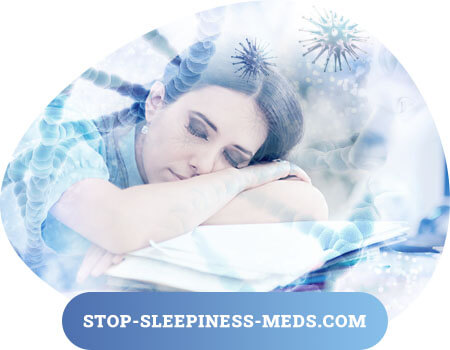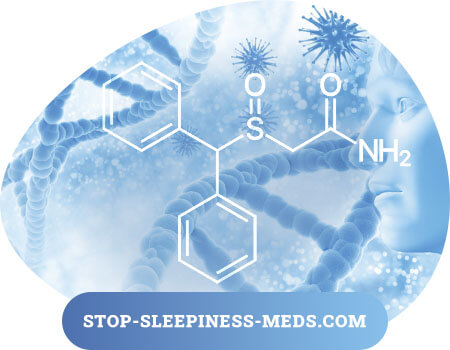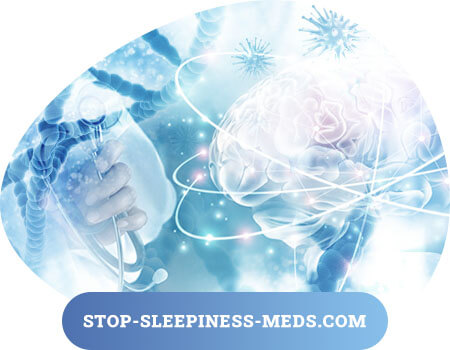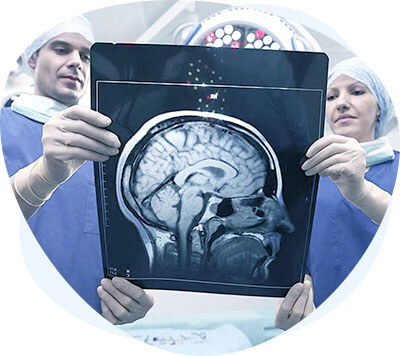Modafinil: The Secret to Overcoming Sleepiness
Modafinil is one of the most wafer-like drugs we know. The best part is that it does not have similar characteristics to amphetamines or other compounds with the same final effect but uses other properties to generate a radical stimulus on the central nervous system.
Psychostimulants are drugs used quite frequently. In recent years, there have been various tendencies to use them, especially by university students who use stimulant enhancers to improve their concentration during exam periods, as is the case with the use of Adderall.

The problem is that psychoactive drugs share many functions and have complicated effects on our bodies, to which we react differently. Modafinil, for example, although it can cause a stimulant effect, it can also trigger counter effects. Its effects can even last for much longer than the stipulated time since we all have varying degrees of sensitivity to drugs in the nervous system.
Another important fact is that many of the drugs used in the nervous system cause tolerance or dependence. Modafinil is no exception, so it should only be used on the advice of a doctor who can also provide the necessary supervision.
However, not everything is negative. Modafinil also has positive effects (on which we rely) that serve to regulate various conditions and are the basis for medical use. It is difficult for us to completely control the way our brain reacts, due to all the intricate circuits it possesses, however, Modafinil stands out from the rest of the existing compounds.
It belongs to one of the newest classes of psychostimulants, called Eugeroics, where several other compounds are found. Eugeroic means Good Arousal, a name given because it produces far fewer adverse effects and disturbances than other traditional psychostimulants, which interfere greatly with sleep (and rest), as well as causing psychiatric disorders and easily leading to addiction.
Pharmacological Mechanism - Science behind Modafinil
It should be noted that Modafinil has been tested for many years to reach the market as a viable option for various uses, however, we must know how this drug works.
According to available studies, much of the effect of this drug is based on Orexin, a family of peptides that is strongly rooted in our brain and involved in functions related to sleep and narcolepsy. It appears to be responsible for wakefulness-promoting and sleep-inhibition.
These peptides are found in neurons in specific regions of the brain that not only control almost all sleep-related functions, but also areas related to memory, mood, and other higher brain functions.
Although it is well known that its effect lies in that area, it is still not known how Orexin can cause the complete activation of neurons to prevent sleep and increase brain alertness, thus avoiding narcolepsy. Studies are needed that can clarify what the real effect is.
Some have come forward saying that it has a special selectivity and prominence for the expression of certain proteins in specific regions of the brain that are capable of inducing a generalized response, however, the effect is different from that of amphetamine and other stimulants. Also, some have claimed that it can activate adrenergic (Alpha 1) receptors which have specific functions on alertness.
The best research claims that the primary effect of this drug comes through these activations, however, this would not fully explain the total activation effect that wakefulness promotes. Other studies also claim that it affects other hormones that also have a role in alertness, such as noradrenaline.
Indications and Uses
As we have mentioned, modafinil decreases sleep due to narcolepsy and other sleep disorders, such as SAHOS, so its uses are mainly related to those effects. It is necessary to emphasize again that you should consult a specialist doctor to give you personalized indications about your case and how to approach it.
Besides, modafinil is not a cure for diseases. Disorders may continue to persist despite the use of this drug. The effect of modafinil is to lessen or completely alleviate the symptoms, but as soon as you stop using it, there is a high probability that the symptoms will return and recur. Here are the indications for modafinil:
Narcolepsy
Narcolepsy is one of the most common sleep disorders in existence. This chronic manifestation is characterized by extreme daytime sleepiness, with sudden sleep attacks. Everyone who suffers from it has trouble staying awake and alert during the day, regardless of the time of day. Also, it can significantly alter your quality of life.
Even in more severe states, narcolepsy can be accompanied by cataplexy or narcolepsy type two, where there is a sudden loss of muscle tone that is usually caused by some intense emotion. Even if the symptoms are somewhat contracted, it is common to observe this manifestation.
In the case of Narcolepsy, the doses used are usually 200mg once in the morning, 30 minutes after getting up. Similarly, we remember that this is not the definitive treatment, but rather an excellent way of calming the symptoms and recovering some of the functionalism we have lost.
SAHOS
Obstructive sleep apnea/hypopnea syndrome (OSAS) is defined as frequent episodes of partial or total blockage of the airway during sleep, which causes the patient to have "micro-wakings" due to decreased blood oxygen levels.
This is due to alterations in the upper airway, which can be mild or severe, that do not allow the flow through it. It usually occurs in obese people and can cause more than 30 micro-wakenings during an hour of sleep, which severely affects lifestyle and the ability to stay awake during the day.

The dose is like that used for narcolepsy. Even so, the wear and tear on our bodies due to lack of sleep cannot be repaired with the use of modafinil. In this case, there is an alteration that requires the intervention of a medical specialist, so you should consult one.
Shift Work Sleep Disorder (SWSD)
Our circadian rhythm is what determines when we are sleepy and when we are awake, under normal conditions. SWSD is an alteration of this cycle, which causes insomnia and sleep disorders (drowsiness), at the times when we should be most productive. This is due to alterations in the timing of going to bed and getting up, due to jobs where we are forced to change our way of living.
Although the treatment is not Modafinil, this drug can help and increase the state of alertness and regularize our daily routine. However, as with the other disorders mentioned above, this is not the cure. It is necessary to recover our normal circadian cycle and the way we sleep, which can only be achieved through specialized therapies.
As with all other pathologies, the dose can be 200mg once in the morning, or just after we wake up, depending on when we need to be productive. Even so, it may work to use slightly lower doses to start, in the case of this disorder.
How to Take Modafinil?
To begin, as we emphasize every time we can, it is necessary for your doctor to tell you the dose and to attend a complete evaluation before you start taking this medication. Also, you will need to have some tests done to rule out certain causes.
Modafinil is a habit-forming medicine that can be used in conjunction with the guidance of a specialist (usually a psychiatrist). You can't share it with anyone, especially if you have a relevant history (such as drug use or other addictions). Also, it is punishable by law for you to sell or give it away.
Doctors may vary the way they indicate this. For example, some choose to indicate it half an hour after getting up, so that you can start your day with energy and take control of activities from early on. However, many specialists choose to use it an hour before starting work (which can be quite different).
You need to know that the maximum time of use is 3 months, if it does not work, you should use another therapy line. However, the success rate is quite high since the use of the drug is usually in conjunction with psychotherapy and advice from professionals.
In the case that the cause of your sleep disorder is obstructive sleep pain, you may also use other measures in conjunction with the use of Modafinil such as the continuous positive airway pressure (CPAP) machine. This machine "forces" air into your lungs, without too much pressure, just enough to allow you to breathe and not stay up all night with micro-wakenings.
This way, specific measures would be used for when you are sleeping, and others to keep you awake during the day. This is an excellent example of how patients who have sleep disorders and need to use Modafinil should be treated.
Finally, you need to know that you can consume Modafinil with or without food, it will not alter its absorption in any way. Besides, remember to store it at room temperature, not impacted by heat or humidity.
Your doctor oversees supervising your case and giving you specific measures as your treatment progresses. If you don't have any improvement or notice that you are still too sleepy during the day, despite taking modafinil, then it is better to visit your doctor again. Also, be aware of how much medication you have and use, and don't overdo it, as it's a drug with a high potential for addiction.
If you miss a dose, the most important thing is that you get back on track. Try to take the pill as soon as you remember that you missed it, however, if the next dose is near, then you better wait the necessary time. You should not use it if you are less than 4 hours away from sleep, as it will negatively affect your sleep and the damage will get even worse.
This medicine may also cause certain reactions when used in conjunction with other drugs. We will leave you with an interesting list later, but for now, we can tell you that you should not use alcohol and central nervous system suppressants (benzodiazepines, for example).
On the other hand, while you are under the influence of modafinil, you should not practice any dangerous or high-impact activity. You should not drive, nor should you do work that requires extreme attention. While you are increasing your levels of alertness, it does not mean that you are functioning at full capacity. For those professionals who require a safer and more viable option, your doctor may be able to point out other options.
To get off the medication, you must do so gradually. If you do it too abruptly, you may experience negative symptoms such as tremors, sweating, nausea, vomiting, and confusion. To prevent this effect, your doctor will decrease the dose as the last days of the treatment approach. Also, remember that the maximum time of use stipulated is 3 months.
Differences between modafinil (Provigil®) and placebo on information processing speed and energetic resources for orientation of attention in narcoleptics
| Assessment | Placebo | Modafinil (Provigil®) | Mean Change from Baseline | p-value |
|---|---|---|---|---|
| N1 Event-Related Potential Latency (milliseconds) | 84.9 ± 6.5 | 88.0 ± 5.7 | 3.1 | P < 0.05 |
| P2 Event-Related Potential Latency (milliseconds) | 186.2 ± 31.7 | 184.9 ± 34.7 | -1.3 | n.s. |
| N2 Event-Related Potential Latency (milliseconds) | 242.7 ± 30.6 | 229.4 ± 25.8 | -13.3 | P < 0.05 |
| P300 Event-Related Potential Latency (milliseconds) | 408.9 ± 39.8 | 376.0 ± 53.4 | -32.8 | P < 0.01 |
| Epworth Sleepiness Scale score | 15.4 ± 4.0 | 10.2 ± 4.1 | -5.2 | P = 0.004 |
| Maintenance of Wakefulness Test sleep latency (minutes) | 11.9 ± 6.9 | 13.3 ± 7.1 | 1.4 | n.s. |
Side Effects
Like all the drugs that exist in the world, modafinil has side effects of which we must beware. As mentioned above, it does not have the same impact on our bodies even though other stimulants, such as amphetamines, do. This is, without a doubt, one of the most user-friendly options that exist to achieve a stimulant effect on our body. Among the most frequent side effects we have:
Nervous system
The most common is headache, which has an incidence of almost 34% in all patients using this drug. This is due to the same stimulant effect that ends up activating side processes on the route to achieve the stimulant effect.
On the other hand, within this same group, but with a much lower frequency, we have dizziness, paresthesias, tremors, somnolence, amnesia, coordination disorders, vertigo, visual alterations among other disorders. It is necessary to mention that the frequency of these alterations is less than 1%, so it is considered quite safe (at least as far as the nervous system is concerned).
Gastrointestinal
It is common for medications to have some degree of impact on our gastrointestinal system. Diarrhea and vomiting are some of the most common effects of medications in general, however, in the case of modafinil, we most often experience nausea (up to 11% of cases).
Of course, there are other manifestations a little more serious than nausea in the gastrointestinal system, such as diarrhea, dry mouth, dyspepsia and even abdominal pain with swallowing problems. These have a frequency of less than 10% and are usually not as severe, which still allows the use of the medication.
Cardiovascular
The cardiovascular system is also affected by using this drug in some patients who take it. Palpitations are undoubtedly the most common manifestation, but increased blood pressure, heart rate (palpitations), rhythm disorders, bradycardia, and chest pain may also occur.
The detail is that sometimes it can cause alterations that cause concern, such as abnormalities in the electrocardiogram, changes in T waves, transient ischemic events and other alterations such as myocardial infarction, although this is quite rare (0.1%).
Other systems
The most important thing is that a test is done first to find out whether the patient is allergic to modafinil, before its prolonged use. This can be done by the doctor by using small doses of this drug to start the treatment, instead of starting with the 200mg that is recommended in almost all pathologies.
It is necessary to remember that all people may experience a different degree of hypersensitivity or allergy. Therefore, some may manifest a severe reaction that prevents them from breathing, known as anaphylactic shock, while others will have mild symptoms such as a skin rash after the use of the drug.
It should be stressed that the dose used is directly related to the magnitude of the adverse effects. For example, if 400 mg doses are used, it is more frequent to observe neurological or cardiovascular disorders such as those mentioned above. Even so, this drug can cause dermatological, urinary, hematological and even hepatic alterations, so supervision by a doctor is crucial.
Besides, after the use of modafinil, it will be necessary to have certain blood tests done at least once a month to check your health status and that this drug is not causing secondary alterations in your body without clear symptoms. Thus, it is likely that this drug will cause liver damage without you realizing it. Therefore, monitoring during the use of the drug is crucial.
Contraindications - when not to take Modafinil
Similarly, not all patients are suitable for the consumption of this medicine. Not everyone can use it since the harm will be far greater than the benefits that can be expected. Some of the most important contraindications are:
Hypersensitivity
Regardless of the degree of the reaction, it is necessary to know that modafinil cannot be used. If a patient experienced any skin rashes after the use of modafinil, it is necessary to stop its use and look for alternatives from different groups or families of drugs. Also, the contraindication should be further respected if the patient experiences any degree of anaphylactic shock.
On the other hand, the tolerance test before the use of modafinil must be respected. It should be started with very low doses to determine whether an adverse reaction from the drug is possible. If so, it cannot be used under any circumstances, regardless of possible benefit.
Psychiatric disorders
Some diseases of the mental sphere can also act as strong contraindications to the use of modafinil. In this category, we can include all those where there is a potential "trigger" complex. This is the case of generalized anxiety disorders, severe anxiety, or agitated states such as psychosis.
It is also necessary to emphasize that it cannot be used in patients who have depressive mental disorders or that diminish the patient's functionalism. If the "fatigue" is not due to any of the causes mentioned in the indications of modafinil, then it should not be recommended despite its possible benefits on the patient.
Liver disorders
A final important contraindication concerns liver deficiency. If the patient has a liver disorder, it is necessary to omit the use of this drug since this is the most important route in the metabolism and elimination of modafinil.
Also, if the patient requires the use of other drugs that are also processed through the liver, it is necessary to stop or avoid modafinil. Many have enzymatic interaction with this drug, so we will only prolong its action on our body and have an anomalous effect that will keep us hyper-stimulated for very long periods.
Sleep is a physiological need, as is hunger or the urge to defecate or urinate. We can't ignore it. However, sometimes there are some underlying causes that do not allow us to function normally during our day because of the high levels of sleepiness we may be experiencing.
Modafinil is an excellent therapeutic option to increase stimulation, however, it should always be used under the supervision of a doctor who can control and regulate our health status during the period we are under the influence of the drug. If we do not use it properly, it is quite likely that the adverse effects will be above us.
Even so, this is one of the newest families of drugs with fewer adverse effects and which can provide a quite effective stimulus to our body, so we can consider it as a safe option for most patients.
Articles
Sleepiness and Drowsiness: Diagnosis and Treatment to Improve Your Lifestyle
Sleepiness is considered a physiological necessity by the best scientists since it is the same as hunger and thirst for a person's survival. If we look for a slightly more direct definition of this term, it is the tendency to fall asleep or the propensity to fall asleep. The intensity of this need can vary depending on how easily sleep is initiated and how difficult it is to interrupt it.
It is normal that, after a night where you cannot fall asleep, you have trouble staying awake during the day. However, the definition of drowsiness also includes difficulty concentrating and being able to perform common daytime activities. This is what can be considered "physiological sleepiness," the simple propensity to sleep.
However, there is also another coin to this story, which is pathological sleepiness, where there is an underlying cause that does not allow for full rest or causes daytime sleepiness without any physiological explanation to support it.
Also, it can be classified into habitual and occasional. In the case of the former, it is an invariable condition that can be caused by chronic diseases such as SAHOS or alterations in the circadian cycle. On the other hand, the occasional one may be caused by specific disorders such as "jet lag" which causes circadian dysrhythmia by traveling between different time zones.
This can cause occasional sleepiness which, although pathological, can quickly resolve. Some authors add a third type of sleepiness called "elective or excessive sleepiness", where the person can easily fall asleep in situations where it is not socially accepted or is not often done.

These are all common concepts that have various triggers that we will explore later. However, other classifications can help us understand the origin and how sleepiness evolves. This is "subjective and objective".
On the one hand, the objective one is the tendency for a person to fall asleep, the propensity for real sleep. However, this definition has a difference: it is based on a standardized scale for quantifying sleepiness. It is called the Multiple Sleep Latency Test (MSLT). Besides, several other studies (mainly electrooculogram and electromyography) are carried out to arrive at standardization of its own.
As for the subjective one, it has to do with the autonomous perception of each person. This can only be described by the patient and does not require confirmatory studies. If studies are carried out or the various tools or instruments are applied, and it is concluded that drowsiness is demonstrable, then it will become objective.
Several errors occur in conventional medical practice concerning drowsiness, due to its relationship with other symptoms. One of the most important is to confuse it with fatigue since a certain weakness is experienced that can be confused with one or the other. However, it is crucial to distinguish them because the diagnostic and therapeutic perspective changes a lot depending on what the cause is.
Also, weakness and fatigue are subjective disorders, experienced by the patient, that cannot be categorized as objective sleepiness. The quantification of sleepiness is crucial to make the differentiation and to approach a much more precise diagnosis of the underlying cause of the disorder.
Besides, we can distinguish certain differences depending on the time of onset. Remember that drowsiness is strongly related to work-related schedules or peak alertness (which may vary depending on the person). On the other hand, weakness does not have a specific timetable. It just happens. This is a difference that can be used to differentiate between one and the other.
Also, we can link sleepiness to a reduced ability to concentrate and to evoke memories. Let us remember that drowsiness is born from a basic physiological need (such as sleep) while weakness is caused by some other entity, probably organic, which we must rule out.
Causes of Drowsiness
Although there are millions of causes behind this controversial clinical sign, we will dedicate ourselves to explaining the simplest and most frequent ones. Furthermore, it is necessary to emphasize that this can only be determined by a specialist, so if you consider that you have excessive sleepiness, we recommend that you visit your family doctor.
Within the causes, we must differentiate them into two large groups:
Primary Causes
The primary causes are those that have a central origin, that is, that come directly from the condition of the central nervous system. In this huge group, we can highlight narcolepsy, idiopathic hypersomnia and other rare ones such as Kleine-Levin's syndrome.
Narcolepsy is a neurological disorder characterized by the impossibility of regulating sleep-wake cycles, the key to our rest. The main symptom is sleepiness, however, many present "cataplexy", a state where they lose muscle strength suddenly, which can be triggered by strong emotions. In some other cases, they may develop hallucinations or other mental manifestations.
Primary or recurrent hypersomnia is one characterized by excessive sleepiness, with prolonged episodes of nighttime sleep and daytime sleep episodes, for a month (at least). This disorder falls into a category called "intrinsic sleep disorders" and causes significant impairment of our functional capacity, even without insomnia or some other characteristic that justifies hypersomnia.
Secondary Causes
The largest group of these disorders are secondary causes, those that do not have a directly central origin but are triggered by various factors that occur in our body and directly or indirectly affect the functioning of our sleep-wake cycle.
One of the most discussed is the syndrome of obstructive sleep apnea/hypopnea (OSA), which falls into the group of "respiratory disorders". This is caused by alterations in the functioning of the upper respiratory system, where some disorder prevents normal breathing during the night, causing micro-wakings (more than 30 per hour if severe), which affects the patient negatively.
Other disorders are related to the type of work and activities performed by the patient. There is a syndrome that is becoming quite common which is the shift work sleep disorder, which affects people who work at times other than their circadian cycle (such as night watchmen or doctors on night duty). This is another cause of daytime and objective sleepiness. However, these two are not the only disorders in this group.
Here we can also find jet lag or any other alteration of the circadian cycle. Even some less well-known syndromes, such as restless leg syndrome, can cause drowsiness. It is necessary, as we always say, for a specialist to reach a diagnosis and make the proper evaluation of each patient.
Another group that we must highlight and that cannot be left out is that of concomitant diseases. Just as some severe pathologies can cause weakness and significantly affect the patient's life, they can also cause drowsiness. In this group we can mention cancer, but also other cerebrovascular, cardiovascular, inflammatory, neurodegenerative, psychiatric diseases (especially depression), etc.
Many scientists have tried to describe each of these groups in full and how they affect our bodies, however, the cause behind drowsiness cannot always be specifically defined. Therefore, it is crucial to perform the various studies and tests available to confirm and certify that the disorder in question exists.
How to evaluate Sleepiness?
The first thing is to know that this can only be done by a specialist and you should not take it on your own. You must have a general and complete evaluation that not only involves some aspects of your medical history but also tests and studies that can only be indicated by a doctor.
The approach to drowsiness is quite complex. Many possible mechanisms have been proposed not only as a cause but also for addressing it. Therefore, there are multiple concepts and methods to adequately address this clinical sign, although most have a certain degree of agreement and a similar scope.
Within these we have:
Measurement of behavior
First, direct observation of the individual's behavior must be made; some characteristics always stand out. One of the most common is yawning, although there may also be certain oculomotor signs such as "blinking" and some typical facial expressions, including head movement. The fiery "pitching".
On the other hand, functioning should also be checked. The various aspects related to our overall performance in society must be measured. It is necessary to know how serious the condition is and what it prevents us from doing during the day. Several tests can be considered for this task, such as the performance test, and others such as the psychomotor vigilance test and driving simulators.
Self-evaluation
It is necessary to know the patient's perception since this puts us in the context of what they consider to be the drowsiness and the degree of condition they are feeling. In this way, the presence of subjective sleepiness can be diagnosed and determined.
There are several scales to determine this, depending on whether it is acute or global. Some of the most used is the Stanford Sleepiness Scale, as well as the Epworth Sleepiness Scale (ESS).
Neurophysiology
As we mentioned elsewhere in this article, it is necessary to know the state of our body before any type of intervention or even to affirm that sleepiness exists. For this reason, several different tests have been identified to categorize the magnitude of drowsiness, if it is present.
Also, several studies can be added to this case. Polysomnography, pupillometry and even evoked brain potentials may be indicated. All of them know how our body reacts and how it responds while we are sleeping.
At this time no test can be considered as "Gold Standard" for the diagnosis of this disorder. Multiple evaluations must be performed at the same time to clarify which is the therapeutic route to follow. However, as mentioned above, all of this must be determined by your specialist.
The Impact of Sleepiness on the Public Area
Sleepiness is born from the alteration of several crucial aspects such as the quality of sleep, the quantity and the circadian rhythm that the patient manages. It is crucial that they can exist in total balance and that they allow the total functional performance of each person. Sleep deprivation, where you don't sleep for long periods, can have a serious impact on our organism.
Some people experience sleep deprivation for short periods, such as the day before a major test, and then recover with several naps or deep sleep. However, for those whose condition becomes chronic or has a major impact, a specific plan to return to normal needs to be created.
Sleep is like drops in a cup. It builds up. To "free" yourself from all those accumulated hours of sleep, you must gradually get it back. This is known as sleep debt.
Loss of sleep has an impact on mental health, but also on the body. Some expressions of this disturbance are mood swings, stress, depression, increased consumption of illicit substances, increased food intake, negative social altitudes (decreased ability to socialize) and even economic impact.
On the physical side, it can increase the complications of pregnancy, increase cardiovascular risk, cause hormonal disorders (mild or complex), impede learning, promote the appearance of cerebrovascular disorders and so on. The list is endless.
Sleep is a crucial physiological need for any human being. It is necessary to learn how to control drowsiness, looking for its cause in the first place but also using some of the available therapeutic options (such as Modafinil), which act as enhancers or stimulators of our body, giving us the necessary energies to complete our day.













